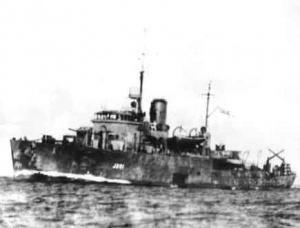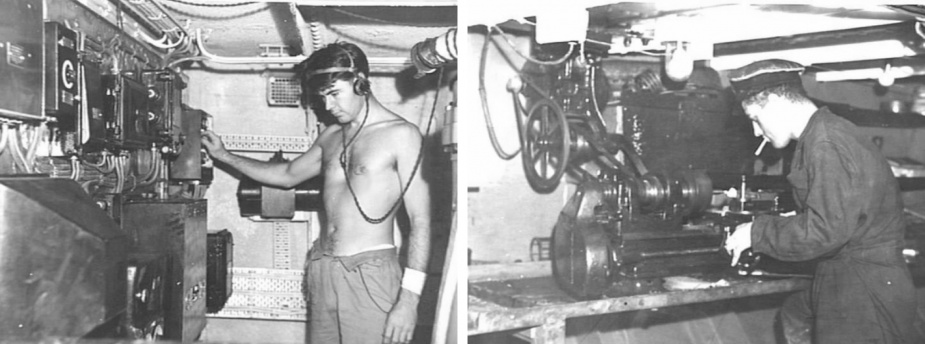HMAS Geelong (I)
| Pennant |
J201 |
|---|---|
| Builder |
Melbourne Harbour Trust, Williamstown |
| Laid Down |
16 October 1940 |
| Launched |
22 April 1941 |
| Launched by |
Lady Dugan, wife of the Governor of Victoria |
| Commissioned |
16 January 1942 |
| Decommissioned |
18 October 1944 |
| Fate |
Sank on 18 October 1944 following a collision with United States Tanker York |
| Dimensions & Displacement | |
| Displacement | 650 tons |
| Length | 186 feet |
| Beam | 31 feet |
| Draught | 8 feet 6 inches |
| Performance | |
| Speed | 15 knots |
| Complement | |
| Crew | 85 |
| Propulsion | |
| Horsepower | 1750 |
| Armament | |
| Guns |
|
| Other Armament |
|
| Awards | |
| Battle Honours | |

HMAS Geelong was one of sixty Australian Minesweepers (commonly known as corvettes) built during World War II in Australian shipyards as part of the Commonwealth Government’s wartime shipbuilding programme. Twenty were built on Admiralty order but manned and commissioned by the Royal Australian Navy. Thirty six (including Geelong) were built for the Royal Australian Navy and four for the Royal Indian Navy.
HMAS Geelong was laid down at Melbourne Harbour Trust, Williamstown, Melbourne, Victoria on 16 October 1940. She was launched on 22 April 1941 by Lady Dugan, wife of the Governor of Victoria, and was the first RAN warship to carry the name of the port city located on Corio Bay and the Barwon River, in the state of Victoria. Geelong is 75km south west of the state capital, Melbourne, and is the second largest Victorian city.
HMAS Geelong commissioned at Melbourne on 16 January 1942 under the command of Lieutenant Colin G Hill, MBE, RANR(S).
After commissioning Geelong proceeded to her namesake city the following day for a one day visit, after which she commenced her trials and working up exercises.
Operational war service began with a brief period of minesweeping and anti-submarine duty on the Australian east coast. On 8 March 1942 Geelong departed from Brisbane for New Caledonia where she served on anti-submarine duties in the Noumea area until May 1942. In June 1942 she began a period of convoy escort duty between Sydney and Queensland ports which lasted until January 1944, when she proceeded to Adelaide for a refit which lasted until March 1944.
Following a further brief period of service in Australian waters, Geelong proceeded to the New Guinea theatre of operations, arriving at Milne Bay on 17 April 1944. The next six months were spent on convoy escort duties in the South West Pacific Area, mainly in New Guinea and New Britain waters, and as an anti-submarine patrol vessel in the Solomons Sea.
On 18 October 1944 Geelong sank following a collision with the United States tanker York (10,488 tons) in position 6°4´S, 147°45´E, north of Langemak, New Guinea. There were no casualties. The survivors were picked up by York and landed at Langemak, from where they were taken to Milne Bay by aircraft and her sister ship HMAS Ararat.
Note: This video is hosted on YouTube. Department of Defence users will not be able to view this video on the Defence Protected Network.
This cine film has been placed online as part of the Sea Power Centre - Australia's ongoing archival digitisation program.
Further reading
- 'The Corvettes: Forgotten Ships of the Royal Australian Navy' by Iris Nesdale - published by the author, October, 1982.
- 'Corvettes - Little Ships for Big Men' by Frank B Walker - published by Kingfisher Press, NSW, 1996.
- 'The Australian Centenary History of Defence Volume III, The Royal Australian Navy' edited by David Stevens, Oxford University Press, South Melbourne, Victoria, Australia, 2001.

















